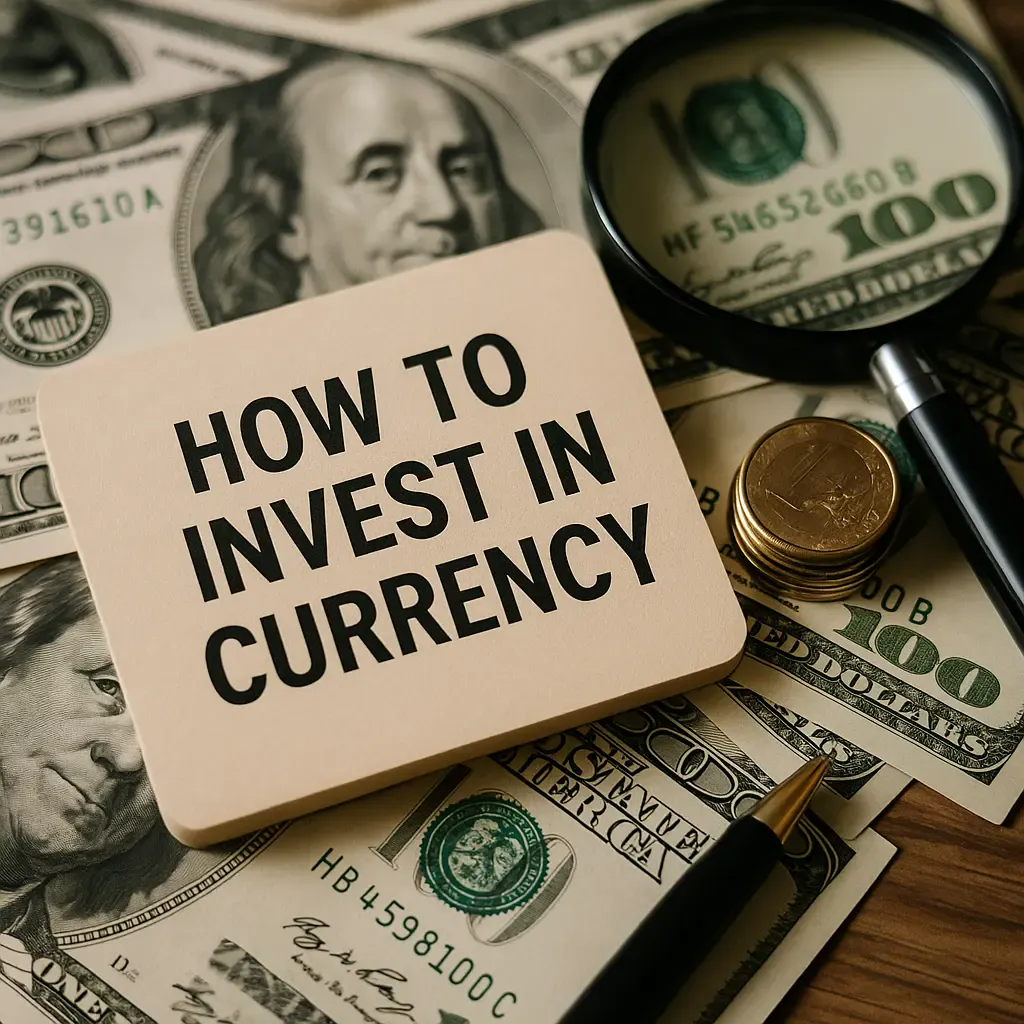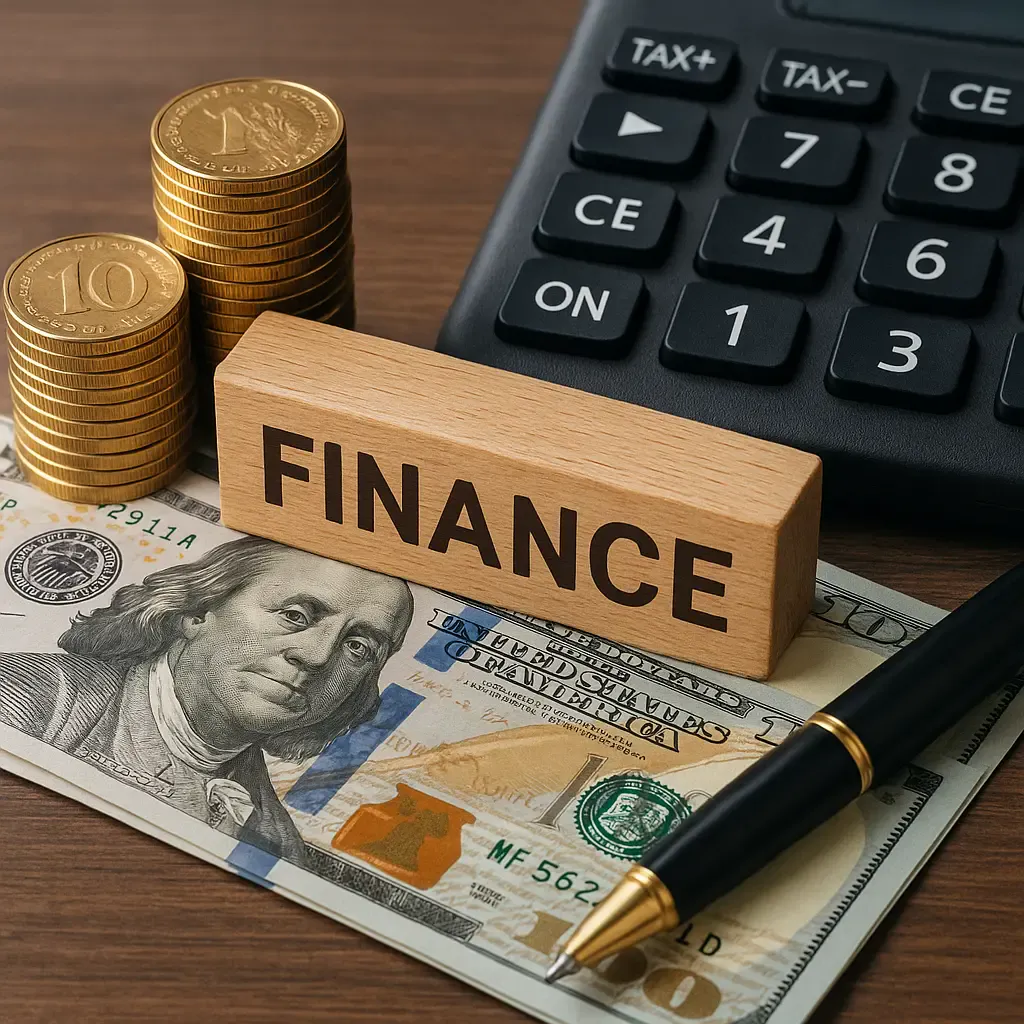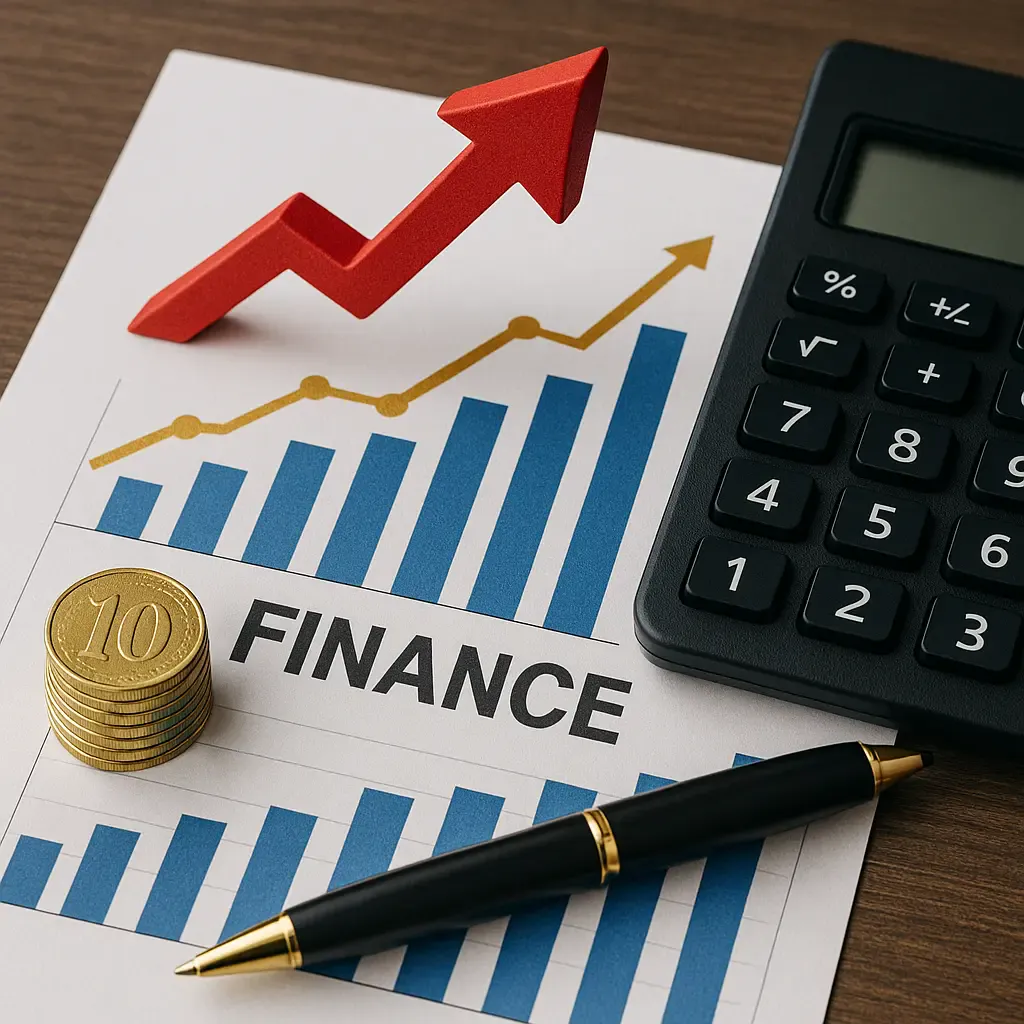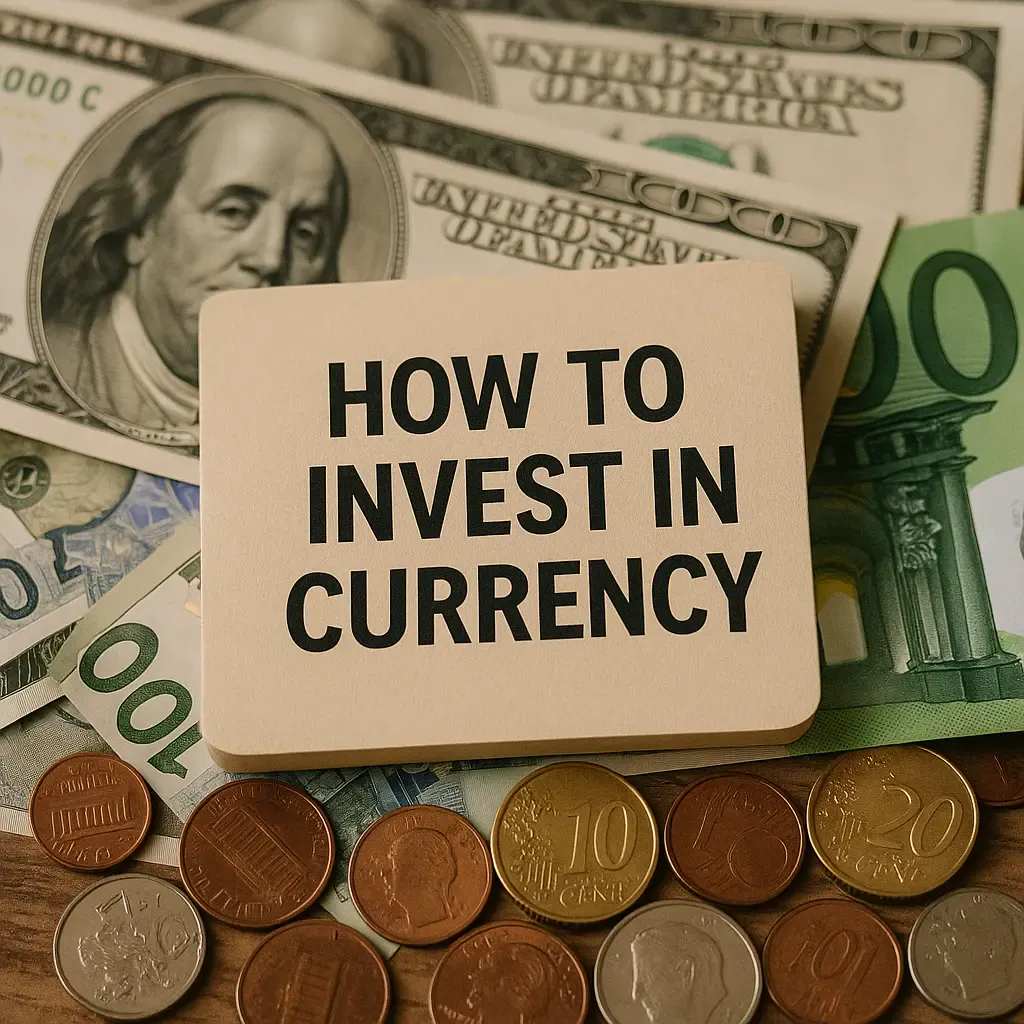Introduction: The Thrill and Threat of Currency Investment
In a world that’s increasingly interconnected, knowing how to invest in currency can open doors to exciting financial opportunities.
The forex (foreign exchange) market is the largest and most liquid in the world, trading over $7.5 trillion daily. But with great potential comes significant risk.
Whether you’re a beginner curious about currency trading for beginners or an investor exploring new avenues, success in forex demands more than just luck. It requires strategy, research, discipline, and—most importantly—risk management.
This guide delves into actionable, real-world strategies to help you safely navigate the volatile waters of currency trading, Minimise risk, and Maximise your returns.

Understanding Currency Investment: What is It Really?
Investing in currency means buying one currency while selling another—always done in pairs (e.g., EUR/USD, GBP/JPY). You’re essentially betting on the direction one currency will move relative to the other.
Key Concepts to Know:
Base currency: The first in the pair (e.g., EUR in EUR/USD).
Quote currency: The second in the pair.
Pips: The smallest price move in the exchange rate.
Leverage involves utilising borrowed money to enhance the scale of trades, aiming for higher returns but also exposing the trader to substantial risk.
The spread represents the margin between the asking price and the bidding price in a financial transaction.
💡 Pro Tip: Start with a demo account. Most forex platforms like IG and OANDA offer them, letting you learn the ropes risk-free.
Currency Trading for Beginners: Setting the Foundation
1. Choose a Reputable Broker
Not all brokers are created equal. Look for:
FCA regulation or your country’s financial authority
Transparent fee structures
Educational resources and customer support
User-friendly trading platforms like MetaTrader 4/5
🔗 Discover Investopedia’s latest breakdown of top brokers to help you choose the right platform with confidence.
2. Understand Market Drivers
Currencies react to:
Interest rates (central bank decisions)
Inflation and employment data
Geopolitical tensions and economic policies
Market sentiment and speculation
Keeping up with economic calendars and global news is essential. Use tools like Forex Factory to stay informed.
3. Start Small, Think Long-Term
Begin with micro-lots and small trades. Avoid high leverage until you’re consistently profitable.

Forex Investment Strategies: Minimising Risk the Smart Way
Let’s face it—forex can be a gamble without a plan. The key to safety lies in well-tested strategies.
Risk Management Strategy
Arguably more important than the trade itself:
Always ensure you’re not risking more than 1-2% of your capital in a single trade.
Set stop-loss orders to prevent devastating losses.
Use take-profit orders to lock in gains.
Technical vs. Fundamental Analysis
Most successful traders use a blend:
To interpret market behaviour, technical analysis focuses on visual price patterns, analytical tools such as the RSI and MACD, and the directional flow of trends.
Fundamental analysis revolves around evaluating key economic trends, monetary policy shifts, and the impact of political occurrences.
Carry Trade Strategy
This approach consists of taking out loans in currencies with cheaper borrowing costs and channeling that capital into currencies with superior interest yields. It’s most effective during periods of economic stability but demands vigilance for unexpected moves by central banks.
Trend Following
The “trend is your friend” approach. Trade in the direction of the current market momentum. Tools like moving averages help identify trends.
Scalping vs. Swing Trading
Scalping: High-frequency trades, small gains (risky and fast-paced).
Swing trading is a strategy where traders keep their investments active for multiple days or weeks, aiming to benefit from intermediate market trend shifts.
Best Currencies to Invest In: Where Should You Focus?
Some currencies are more stable and liquid than others. While exotic currencies may tempt you with high returns, they also carry higher risk.
| Currency | Stability | Liquidity | Notes |
|---|---|---|---|
| USD (US Dollar) | High | Very High | Global reserve currency |
| EUR (Euro) | High | Very High | Backed by Eurozone economy |
| JPY (Japanese Yen) | High | High | Safe-haven in times of crisis |
| GBP (British Pound) | Medium | High | Volatile, especially post-Brexit |
| CHF (Swiss Franc) | High | Medium | Another safe-haven option |
| AUD (Australian Dollar) | Medium | Medium | Correlates with commodity prices |
💡 Avoid jumping into exotic pairs like ZAR/TRY unless you’re experienced.
How to Invest in Currency Safely: Key Risk-Reduction Techniques
Here’s where you differentiate yourself from the average speculator.
1. Use a Trading Plan
Before each trade, know:
- Your entry and exit points
- Risk/reward ratio
- Why you’re entering the trade (what data or signal prompted it?)
2. Limit Leverage
Leverage can boost your profits, but it also magnifies potential losses. Start with low leverage—ideally no more than 10:1.
3. Diversify Your Trades
Steer clear of concentrating your funds in just one currency; instead, distribute your investments across various currency pairs and financial sectors to safeguard against potential losses.
4. Practice Emotional Discipline
Fear and greed can ruin even the best strategy. Stick to your plan and avoid overtrading.
5. Use Stop-Loss and Take-Profit Orders
These automate your risk management and protect you from emotional decision-making.

Real-World Insight: Lessons from a Rookie Trader
A few years ago, I dipped my toes into forex after watching a friend earn impressive profits trading EUR/USD. I rushed in with minimal research, over-leveraged my account, and lost 30% of my capital in a week.
The turning point? I stepped back, educated myself, and focused on:
- Learning price action
- Following a strict risk-management plan
- Practising on demo accounts
- Journaling every trade (wins and losses)
Fast forward to today, I make modest but consistent returns. The lesson? Patience and education beat impulse every time.
Tools to Elevate Your Currency Investment Game
Modern trading is tech-enabled. Use these tools to gain an edge:
| Tool/Platform | Use Case | Why It Matters |
|---|---|---|
| MetaTrader 4/5 | Trading platform | Charts, indicators, automation |
| TradingView | Chart analysis | Social trading, advanced visualisation |
| Forex Factory | News tracking | Economic calendar, real-time updates |
| MyFxBook | Performance tracking | Track metrics, copy trading |
| Babypips | Education | Great for currency trading for beginners |
Common Mistakes to Avoid
Even seasoned traders fall into these traps:
- Chasing losses: Trying to recover quickly usually leads to bigger losses.
- Ignoring news events: High-impact news can destroy a well-placed trade.
- Overtrading: More trades ≠ more profit.
- Blindly copying others: What works for one trader might not suit your risk tolerance.
Conclusion: Investing in Currency the Smart Way
Understanding how to invest in currency successfully requires careful planning, not rushing decisions. Whether you’re just beginning your journey into forex trading or looking to fine-tune your investment strategies, the foundational principles remain consistent.
- Educate yourself continuously
- Trade with a plan
- Minimise risk at every step
- Focus on consistency, not quick wins
The currency market offers incredible potential—but only for those who respect the craft.

Final Thoughts & Call to Action
Ready to explore the world of currency investment? Start with a demo account, build your knowledge base, and practise disciplined trading.
👉 Want more insights like this?
Subscribe to Financekd newsletter for weekly forex tips, strategy breakdowns, and exclusive market updates. Or drop your questions in the comments—we’d love to hear your experiences!
1. What is the safest way to invest in currency?
The safest way to invest in currency is by using well-regulated platforms and focusing on major currency pairs such as USD/EUR or GBP/USD. New investors should consider starting with currency exchange-traded funds (ETFs) or mutual funds, which reduce exposure to risk compared to direct forex trading. It’s also crucial to use risk management strategies like stop-loss orders and position sizing.
2. Is currency trading a good investment?
Currency trading can be a good investment for those who understand market dynamics and are prepared for the volatility. It offers high liquidity and potentially fast returns, but it also involves significant risk. For those willing to learn and use strategic tools, investing in currency can be a profitable component of a diversified portfolio.
3. How much capital do you need to start currency investing?
You can start currency investing with as little as $100, especially if your broker offers micro accounts or high leverage. However, to trade responsibly and withstand market fluctuations, a starting amount of $500 to $1,000 is recommended. Always invest an amount you can afford to lose while building experience.
4. Can you earn a profit from investing in foreign currencies?
Yes, you can earn a profit by buying and selling foreign currencies based on exchange rate movements. Success depends on understanding market trends, analysing economic news, and applying technical and fundamental analysis. Consistency and discipline are key to turning currency investing into a reliable income stream.
5. What are the main risks of investing in currency?
Currency investing carries risks such as:
- Market volatility
- Interest rate shifts
- Political and economic instability
- Leverage-related losses
To reduce risk, it’s essential to set clear investment goals, use protective strategies like stop-loss orders, and stay informed about global financial news.
6. Which currencies are the most reliable for investment?
The most reliable currencies for investment are those backed by stable economies. These include:
- US Dollar (USD)
- Euro (EUR)
- Japanese Yen (JPY)
- British Pound (GBP)
- Swiss Franc (CHF)
7. Is it better to invest in currency or stocks?
Currency and stock investments serve different purposes. Currency trading is ideal for short-term gains and traders who prefer fast-moving markets. In contrast, stocks are better for long-term wealth building and passive income.
8. How can a beginner invest in currency safely?
Beginners can invest in currency safely by following these steps:
- Start with a demo trading account to practise
- Learn the basics of forex trading and market indicators
- Choose a trusted, regulated broker
- Begin with major currency pairs
- Use small lot sizes and set realistic expectations
- Apply risk management tools like stop-losses
Education and patience are essential when learning how to invest in currency without incurring heavy losses.

Perfectly composed articles, thankyou for selective information.